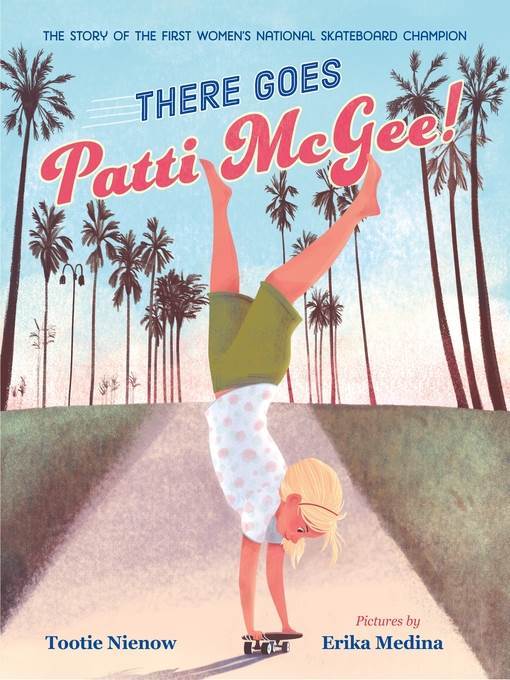
There Goes Patti McGee!
The Story of the First Women's National Skateboard Champion
کتاب های مرتبط
- اطلاعات
- نقد و بررسی
- دیدگاه کاربران
نقد و بررسی

January 11, 2021
Nienow aptly profiles Patti McGee, “the first professional female skateboarder in history,” following her as she first spots a group of boys “riding a board with wheels,” assembles a makeshift board of her own, joins a skateboarding team, and eventually earns a landmark win armed with her new trick—the rolling handstand—at the first National Skateboard Championship in 1964. Nienow makes effective use of anaphora (“When people sneered, Patti smiled. When they yelled “Get off the sidewalk,” all she heard was the click of her board”) and onomatopoeia (“ZOOM!”), while Medina features bold lines that dovetail with renditions of McGee practicing moves. An action-packed picture book biography that will engage casual skaters and non-boarders alike. Back matter includes an author’s note and bibliography. Ages 4–8.

January 1, 2021
K-Gr 4-This empowering picture book biography centers on Patti McGee, a white girl from California who was the first professional female skateboarder and winner of the 1964 National Skateboard Championship for Women. When McGee observed some skateboarders from her window, she was so intrigued that she removed the wheels from her skates to fashion her own skateboard. She practiced relentlessly and soon outgrew her handmade board. However, she was unable to afford a store-bought one. When she saw a poster advertising the formation of a team and the promise of a free skateboard to each member, McGee was determined to join. Spying on the boys, she mastered their moves and added a few of her own. Her hard work paid off-she earned a place on the team. Later, McGee's teammates convinced her to try out for the National Skateboard Championship. She perfected her signature rolling handstand and wowed the crowd and the judges. The succinct, engaging text pairs well with the bold action shots of the barefoot blonde. One page features the brave girl falling, applying copious bandages to her arms and legs, and getting back on the board. Aspiring sports enthusiasts will glean many important messages here: Girls can and should compete with boys; perseverance and practice pay off; you don't need money or fancy equipment to master a sport; and it's important to have fun. Technical terms such as nose wheel, kick turn, and fakie are sprinkled throughout. An afterword, author's note, and source list provide more information. VERDICT An inspirational read-aloud for all collections.-Barbara Auerbach, Cairo P.L., NY
Copyright 2021 School Library Journal, LLC Used with permission.

January 1, 2021
"Zip! Swoosh! Zoom!" In this lively tale of the first female professional skateboarder, clear, direct text and bright, appealing illustrations combine to show how champion Patti McGee first used a homemade skateboard and then went on to hone her skills and join an early skateboarding team made up of boys. The first skater to perform a rolling handstand in competition, she was also the first woman to win a national competition (with a perfect score), and the text focuses on her excitement, focus, and dedication. Meanwhile the illustrations show a spunky, Gidget-like White girl learning to perform specific skills, which are helpfully labeled. The primary narrative is a bit light on detail (the fact that she was entering a female division and received a smaller trophy than the boys did is covered in the endnotes rather than the body of the text) and leaves readers unmoored in time (the 1950s-'60s era is also not stated till the backmatter--and readers never learn how old she was when she began skateboarding or won her championship). Still, the story and pictures themselves bubble with excitement and enthusiasm, and the endnotes provide more information on her influence and explain how she graced the covers of magazines, inspired other girls, toured after her win, and later taught skateboarding. (This book was reviewed digitally with 11-by-17-inch double-page spreads viewed at 78.6% of actual size.) This energetic portrait of the first highly recognized female skateboarder highlights her innovation and skill. (sources) (Picture book/biography. 5-8)
COPYRIGHT(2021) Kirkus Reviews, ALL RIGHTS RESERVED.

























دیدگاه کاربران